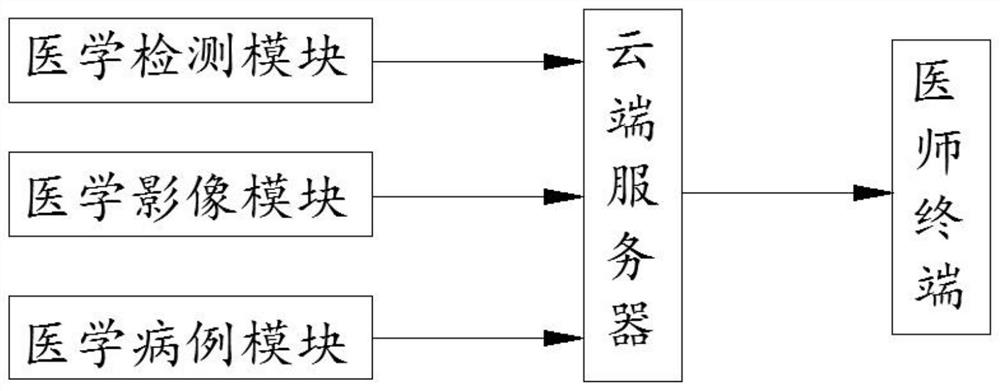Surgical complication evaluation system based on deep learning
A deep learning and surgical technology, applied in the field of surgical complication evaluation system, can solve problems such as high limitations, complex decision-making process, unclear audience, etc., and achieve the effect of reducing workload
- Summary
- Abstract
- Description
- Claims
- Application Information
AI Technical Summary
Problems solved by technology
Method used
Image
Examples
Embodiment Construction
[0042] The specification and claims do not use the difference in name as a way to distinguish components, but use the difference in function of components as a criterion for distinguishing. As mentioned throughout the specification and claims, "comprising" is an open term, so it should be interpreted as "including but not limited to". "Approximately" means that within an acceptable error range, those skilled in the art can solve the technical problem within a certain error range and basically achieve the technical effect.
[0043]In the description of the steps, unless otherwise specified, S1 to S9 do not represent a sequence.
[0044] The present invention will be described in further detail below in conjunction with the accompanying drawings, but it is not intended to limit the present application.
[0045] Surgical complications evaluation system based on deep learning, including cloud server, medical detection module, medical case module, medical imaging module and physic...
PUM
 Login to View More
Login to View More Abstract
Description
Claims
Application Information
 Login to View More
Login to View More - R&D
- Intellectual Property
- Life Sciences
- Materials
- Tech Scout
- Unparalleled Data Quality
- Higher Quality Content
- 60% Fewer Hallucinations
Browse by: Latest US Patents, China's latest patents, Technical Efficacy Thesaurus, Application Domain, Technology Topic, Popular Technical Reports.
© 2025 PatSnap. All rights reserved.Legal|Privacy policy|Modern Slavery Act Transparency Statement|Sitemap|About US| Contact US: help@patsnap.com

